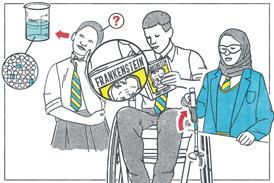Katherine Haxton talks about how to get the best out of peer assessment
![I stock 000020811168 300tb[1]](https://d1ymz67w5raq8g.cloudfront.net/Pictures/480xAny/6/5/2/113652_istock_000020811168_300tb1.jpg)
Peer assessment – where students mark the work of their classmates – is a popular way of helping students engage with all aspects of a piece of work, and in many cases is a very authentic method of assessment. It’s a valuable activity, providing an opportunity for students to reflect on assignments beyond the traditional ‘submit and forget’ mindset.
Often teachers think peer assessment might be a useful way to reduce their marking burden. It really isn’t. If anything, it redistributes the effort, amplifies it and puts the traditional tutor in the role of moderator and mentor to the students who are tentatively broaching the task of assigning marks and providing feedback to their peers.
Consider the type of conversations you may have with colleagues who are sharing the marking of an assignment with you and how you overcome different interpretations of assessment criteria or different approaches to common issues. Now think about having that conversation with a class of 50 students about to peer assess for the first time. For peer assessment to be successful, you have to be prepared to support your students as colleagues in the marking process.
Critical criteria
Common understanding of assessment criteria is critical for successful peer assessment, and indeed broadly for assessment literacy among students. Taking time to allow students to practice applying marking criteria or developing it in collaboration with the students ensures the language being used to describe the required work is accessible and well understood by the majority of students.
When I used this with first year undergraduates to mark presentations, my students favoured assessment sheets that asked questions:
- Was the presentation interesting?
- To the best of your knowledge, was the scientific content accurate?
Posing questions focused students on the aspects they should be assessing, and acknowledging they may not feel expert in the topic gave them some confidence.
In recent years my students have also preferred clear instructions for deducting marks:
- Has a submission been made? If not please award a mark of zero for each aspect in this section.
- Has the student submitted an annotated bibliography? If a well-formatted reference list with no annotations is submitted, please award 4/10 at most.
This means the students don’t have to feel responsible for another student’s poor or failing grade – many students feel bad about awarding low marks.
Troubleshooting peer assessment
Getting students to write feedback is surprisingly challenging. They often lack the vocabulary to describe what they feel is wrong with an assignment in formal terms. Also, they may award very high marks with limited, but praise-laden feedback. This may not be a lack of critical appraisal of the work, but more a reflection of the complex social factors influencing our students’ decisions. Unlike staff who sometimes have to be encouraged to use marks outside of 34–74%, my students have no fear of marks between 60 and 100%.
As the tutor, you will also need to consider the unconscious biases of the students in the design and running of any peer assessment activity. When we mark student work we regularly challenge ourselves to see beyond scrappy handwriting, poorly formatted work in which we struggle to follow the key points, or presentations delivered with strong accents. Our students may not be so aware of the need to delve beyond the superficial appearance of work and get into the content. It is also far easier to judge matters of appearance, style or form when you are less secure in the content yourself.
Peer assessment that is effective for everyone in a class is certainly a difficult balance to strike. And no two classes are the same. It’s a lot of work, but the benefits to the students can make it worth all the effort.
Katherine Haxton is a lecturer in chemistry at Keele University, UK
Image © iStock









No comments yet